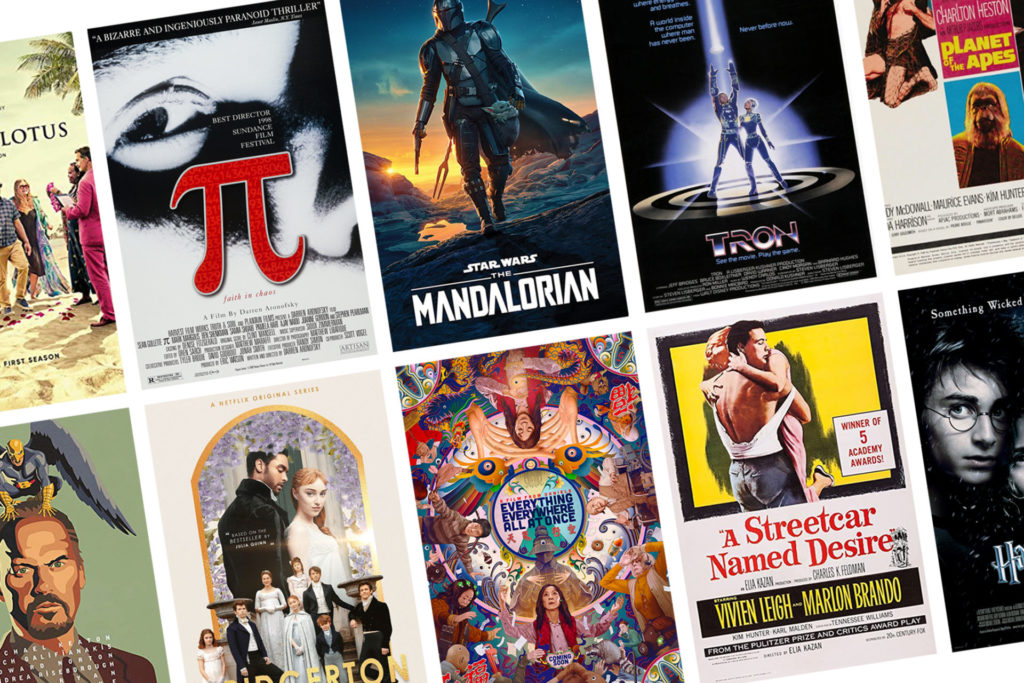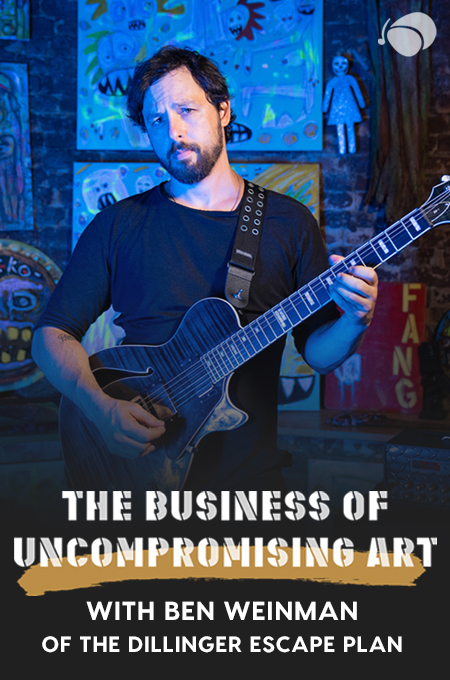+ This lesson is courtesy of Soundfly’s new course, Intro to Scoring for Film & TV. Learn to compose and produce cues for TV, films, and other media.
Traditionally, we tend to think of film scores as primarily “orchestral,” but these days, the unique sound palettes that composers use are one of the chief avenues for expressing creativity and supporting the show or film.
Sometimes a visual narrative calls for multiple sonic palettes — a different one for each scene — but often with a specific show or film, the composer must create a kind of foundational sonic world that serves them throughout the entire project.
Let’s look at some examples across the years of interesting and distinctive sound palettes that defined a specific show or movie’s world. This is only scratching the surface, so we encourage you to reflect on your own picks as well!
Planet of the Apes, by Jerry Goldsmith
Jerry Goldsmith was one of a series of composers in the 1960s pushing the envelope of what film scores could be in Hollywood, and his score to Planet of the Apes is perhaps the one that pushed the boundaries the furthest. It’s extremely avant-garde, with orchestral instruments creating all sorts of unexpected sounds, from string instruments grunting like gorillas to woodwind players fingering their instruments without blowing.
The sonic palette is defined by sparseness, arhythmic playing, dissonance, a lack of traditional harmony or melody, and extended techniques on the strings. The instrumentation is wide and varied, including both traditional orchestral instruments and more unusual sounds like bells, slide whistles, tons of drums, a cuika, mixing bowls, and many other tools.
Because of all this, much of the sound in this film feels alien, tense, uncomfortable, and discordant. The audience is left both on the edge of their seats and unsure about where they are.
A Streetcar Named Desire, by Alex North
Alex North created one of the first jazz-based film scores for the 1951 film A Streetcar Named Desire about a formerly well-off woman escaping debt in a seedy and rundown New Orleans. The sonic palette for this film was meant to be one of danger and seduction — people giving in to vice, passion, desire, and violence. North used dissonant chords and seductive horn lines to convey all these ideas and contribute to the overall atmosphere of the film.
You can hear it right off the bat in the “Main Title,” which sounds smokey and lush, full of danger and temptation. The instrumentation is built around a jazz orchestra, with muted horns and a classic rhythm section driving the pulse of the music.
+ Read more on Flypaper: “The Cutting Edge: 10 Film Scores That Push the Boundaries of Composition.”
Tron, by Wendy Carlos
Wendy Carlos was an electronic music and synthesis pioneer who had scored two Stanley Kubrick films (A Clockwork Orange and The Shining) before taking on the Disney film Tron, released in 1982. Both those previous scores had featured heavy use of synths, but for Tron Carlos combined synths with an orchestra for a more mainstream but still very forward-looking sound.
The film itself is about a computer programmer who gets transported into a piece of software, so the use of synths definitely made sense — and the combination of synths with a more traditional orchestra was a fairly unique sound at the time.
Birdman, by Antonio Sánchez
One of the more distinctive film scores in recent years was Antonio Sánchez’s score to the 2014 film Birdman comprised almost entirely of improvised jazz percussion and drumming. The film also has some source music — pre-existing classical works from composers like Sergei Rachmaninoff — but it’s the drumming that defines the sonic palette of the movie.
The picture itself was presented as if filmed with one continuous shot (except one brief moment), and the drumming contributes to the frenetic atmosphere. Sánchez made his drums sound old and trashy, like they were being played in a dingy old theater in New York City, by detuning them, deadening them, stacking cymbals on top of each other, and other things like that. The result is a score unlike any other, that’s alive, a little frantic, and full of the same sort of anxious movement of the main character.
Harry Potter and the Prisoner of Azkaban, by John Williams
John Williams is not normally known for spending too much time on the sonic palette for a film. In fact, the first two Harry Potter movies are largely scored with fairly traditional symphonic orchestral music. But for the third movie, he changed everything up, in particular with a new approach to the palette.
The score for the third movie is built around a sonic palette that feels more “medieval” or Rennaissance-y (or at least builds on tropes we associate with those eras). We have a children’s choir singing songs based on Macbeth, a very prominent harpsichord that shows up for much of the score, and medieval-sounding horns playing a kind of polyphony. Williams and the director Alfonso Cuarón clearly discussed creating a distinct and unique palette for this film, and it helped take the series in a totally new direction.

Bridgerton, by Kris Bowers
Some of the first properties that came to mind when crafting this list were ones who crafted a distinctive sonic world using source music. A Life Aquatic includes covers of David Bowie songs played on guitar and sung in Portuguese. Westworld has these honky tonk player piano covers of pop hits. Bridgerton does that as well, with string quartets playing slightly Baroque-sounding covers of pop songs. In each case, the music is helping bridge the divide between the world of the show and the world of the audience, while also making it clear that the world of the show is different in some obvious way, whether it’s a saloon in the Wild West or a romanticized Regency ball.
Composer Kris Bowers builds on that concept by also injecting his entire score with this intriguing combination of music that sounds both old and modern. Apparently, he first tried sampling classical pieces and composing using those samples, but it was too brash. What he landed on was something traditional-sounding in terms of instrumentation but more modern in terms of harmony and construction.
The use of strings, pipe organs, and harpsichords, with lots of trills and frills, transports us back to the Regency period, while the specific harmonies and the way the compositions unfold help us understand that it’s a highly romanticized version of that world and makes it more compelling for a modern audience.
Pi, by Clint Mansell
Pi was a film released in 1998, an independent project directed by filmmaker Darren Aronofsky. It’s a psychological thriller, and the score was composed by Clint Mansell. The palette is heavily electronic, with elements of trip-hop, drum and bass, and other electronic subgenres.
The gritty electronic score matches the internal chaos of the protagonist’s mind as he tries to discover an underlying numeric order to reality. It’s dark, frenetic, and energetic, helping to move the plot along and keep the tension high throughout.
The White Lotus, by Cristobal Tapia De Veer
More and more composers have been telling us in the past year or two that clients are using the theme song for HBO’s The White Lotus as their main reference track. In this interview for The LA Times, the creator Mike White said he asked the composer for “tropical anxiety,” while Cristobal Tapia De Veer himself has described what he created as “Hawaiian Hitchcock.” The show itself is a dark comedy about the destructive costs of high-end tourism.
To create an atmosphere that felt tropical yet also full of anxiety, the composer created a very distinctive sound palette for the show, incorporating shrieks and screams, overblown flutes, a South American instrument called a charango, and lots of hand drums from various cultures around the world. The instrumentation feels tropical and raw, while the rhythms and slightly off-pitch tuning make the score wildly tense.
+ Read more on Flypaper: “5 Iconic ‘Star Wars’ Sounds Demystified.”
The Mandalorian, by Ludwig Göransson
Disney+’s series The Mandalorian is crafted on the old Westerns but in outer space, and the composer Ludwig Göransson chose a sound palette that would marry those two worlds — a combination of themes and sounds that you’d expect to hear in a spaghetti Western with electronics and more traditionally sci-fi sounds.
It’s really important to me that every project I’m involved in has a unique sound image and a unique sound world. — Ludwig Göransson
You can hear all those influences combining in the cue called “The Mandalorian.” It starts with these airy recorders that sound like a lone ranger in the desert. The drum rhythm and the low piano notes ringing out sound a little like Ennio Morricone’s “The Ecstacy of Gold,” a spaghetti Western classic. Toward the end of the song, we also get some more classic horn themes that reference the original Star Wars music a little more closely.
There are a lot of influences going into the music here, but Göransson is very deliberate about the sonic world which allows it all to work together.
Everything Everywhere All At Once, by Son Lux
Son Lux leader Ryan Lott designs brand new custom digital instruments based on a variety of sounds, something he goes into a lot of depth about in his Soundfly course Ryan Lott: Designing Sample-Based Instruments. For the score to The Disappearance of Eleanor Rigby, he created instruments based on objects within scenes in the movie, like wine glasses for example.
For Everything Everywhere All At Once, the Son Lux trio took it a step further, designing a number of sample-based instruments based on traditional Chinese instruments, like the paigu, gong, and other Chinese percussion, but then using them in novel ways — which in some ways mimicked the dislocation experienced by the characters in the film. Overall, the score is rich with sounds that are slightly disorienting and hard to identify, creating a beautiful parallel to go with the universe-hopping storyline.
“Daniels had the insight early on that one of the jobs of the score was that it needed to communicate a very specific feeling of a very specific universe in a very short amount of time” — Ryan Lott
If you’re interested in learning more about how Ryan Lott scored films like these, you should definitely check out his course.

Find one more show or film with a distinctive palette.
Come up with another show or film that has a distinctive sonic palette. What specific timbres, harmonies, scales, rhythms, or approaches did the composer draw on to create that distinctive sound palette?
If you’re already a Soundfly subscriber, go ahead and share what you come up with in the #scoring-for-film-and-tv channel on Slack!
Have you checked out Soundfly’s courses yet?
Continue your learning with hundreds of lessons by boundary-pushing, independent artists like Kimbra, Ryan Lott & Ian Chang (of Son Lux), Jlin, Elijah Fox, Kiefer, Com Truise, The Pocket Queen, and RJD2. And don’t forget to try out our intro course on Scoring for Film & TV.




